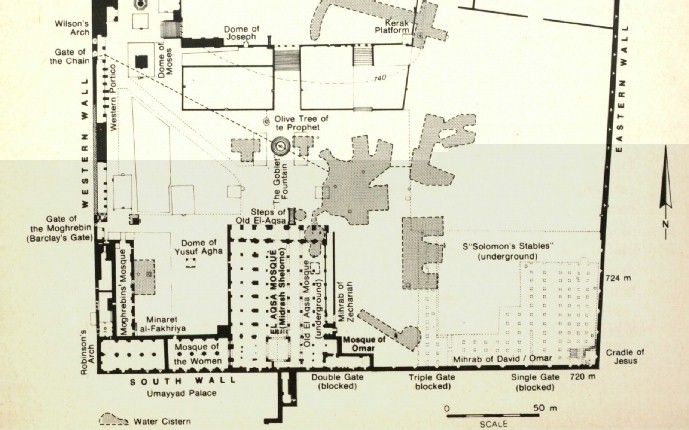Pages
▼
The Templar Rule and Easter
The 77 paragraphs of the original Primitive Rule (1129-1131) hold many details on how the Knights Templars should behave during and between feast days, such as Easter.
The Templar missal of Modena
At the archives of the cathedral of
Modena a precious
liturgical code is preserved. According to some authors, the
medieval code would come from a local scriptorium. Others
believe it would come from Piacenza where was the House of S. Mary of
the Temple, one of the most important Templar foundations of Italy. What is the importance of this liturgical manuscript?
Origin, layout and access of the Templar stables under Temple Mount, Jerusalem
Under the southeastern part of the Haram al-Sharif esplanade (Temple Mount) is a vast subterranean complex that is often indicated as King Solomon's Stables. This complex was actually used as stables by the Knights Templar. What is known about its origin and use?
710 years after the Templar demise on March 18, 1314
"It was the final act of the Templar Trial which would set the stage for the legends that the Templars have survived to this day. On March 18, 1314 (although also March 11 has been mentioned as the most probable date), Jacques de Molay, Geoffroi de Charney, the Preceptor of Normandy, and two other high Temple officials were brought out to confess their sins in public ceremony on the Ile des Javiaux island in the Seine River, Paris, before being sentenced to perpetual imprisonment. Things went differently.
How were the medieval Cistercians different?
The basis of the
Cistercian way of life was traditional, in that they, like other monks,
followed the Rule of St Benedict. Indeed, the reason given for the
decision in 1098 to leave Molesme for Citeaux was the failure of that community to
observe the Rule properly. So in what way did the Cistercians differ from the Benedictines?
Details of the Templar compound on Temple Mount Jerusalem
What did Temple Mount look like during Templar times, so between about 1120 and 1187? Theoderich, who visited Jerusalem probably in 1169, describes the Templar buildings in great detail.
The Templars' religious presence in Medieval Europe
Still very little is known about the military orders’ religious
functions in the dioceses in medieval Europe in which they held ecclesiastical possessions.
What were relevant aspects of Templar religious involvement in medieval society in general
and the reactions of senior clergymen to the Templars’ religious
engagement on the parish level in particular? How did the
Templars expand their network of parish churches and
engage with the lay public?






